Shemlan - The British School For Spies

At the core of Shemlan – A Deadly Tragedy is MECAS – the Middle East Centre For Arab Studies based in the mountain village of Shemlan, where Jason Hartmoor studied as a young diplomat in 1978, the last year the Centre was to remain open. The Centre actually existed and you can visit Shemlan today and gaze over Beirut from the forecourt of the big, white building that was its final form before the Civil War forced its closure. The Centre’s students were made up from the British public sector as well as fee paying students from private sector institutions. But local lore had a far darker purpose at the heart of MECAS – it was a school for spies, no less.
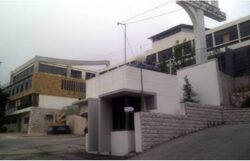
The MECAS building in Shemlan - now an orphanage.
The Middle East Centre for Arab Studies was first established by the British Army in 1944, located at the Austrian Hospice in Jerusalem and initially was run by noted Arabist (and author of Arabia Felix) Bertram Thomas. The Centre was intended to teach officers Arabic language skills, as well as familiarising them with Arab culture.
By September 1947 it had relocated to Shemlan in the Chouf, the mountain range overlooking Beirut, via a short stay in Zarqa in what was then TransJordan. Ownership of the Centre was transferred to the Foreign and Commonwealth office and it was to remain in Shemlan for the next thirty years, teaching Arabic language skills to British diplomats and, yes, spies. But it was never a school for spycraft, or anything like it. Shemlan was about teaching a language, familiarising cultures and loftier integrationist goals than grubby espionage.
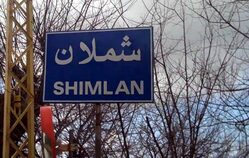
Shimlan, Shemlan. Tomato, tomayto...
But there were spies in MECAS’ woodwork, alright. Possibly MECAS’ most high profile spy was George Blake, who was recalled to London from MECAS in 1961 and arrested as a Soviet agent at Heathrow. Although not one of the ‘Cambridge five’, Blake has long been grouped with them – one of those five being Kim Philby, who fled from Beirut to Moscow in 1963.
Philby was the son of prominent Arabist Harry St John Bridger Philby. Kim wasn't called Kim at all, but Harold – he was born in the Punjab and nicknamed after Kipling’s character. Philby was long suspected of being a Soviet agent but exonerated in 1955. He subsequently moved to Beirut, living in his father’s house in Ajlatun and working as a correspondent for The Economist – and as an agent for MI6 - before finally fleeing to Moscow in January 1963. Philby was never a student at MECAS but has been tied to the Centre through the social life of its students – he was, apparently, an attendee at “countless seminars, parties and receptions.”
It was Blake who was to give the Centre a high profile spy to justify Kamal Jumblatt’s assertion that MECAS was ‘A school for spies’. Blake, born George Behar in 1922, is still alive, living in exile in Moscow. He is said to have betrayed over 400 British spies in his remarkable career as a Soviet double agent - a career that ended with his in camera trial and subsequent 42-year prison sentence. The sentence was notably long, the judge finding him guilty on three separate counts of spying and handing out three maximum sentences.
A highly resourceful man who had enjoyed a remarkable career with the Dutch resistance in the war, Blake conspired to escape from Wormwood Scrubs prison in October 1966 and fled to Moscow via East Germany. As far as the Lebanese were concerned, it just went to prove what they’d always suspected. Up there in Shemlan, was The British Spy School. And people on the mountain still call it that – even though the Centre has long been closed and its building converted to house an orphanage. The legend lives on.

The sign outside the orphanage at Shemlan today.
Buy Alexander's books in ebook or paperback formats here
Writing Shemlan - A Deadly Tragedy
I found a sub-folder in my laptop's big mess of writing folders that contained a tiny snippet of text - an idea I'd jotted down at some stage. It was dated early 2004 and the Word doc in contained no more than:
Today I have been alive a little over an hour. The sea is very blue outside the window of my bedroom, which makes up most of one side of the room. The bed sheets are white and crisp, and they feel good.
It was an odd thing to find in 2013 - particularly as Shemlan - A Deadly Tragedy starts:
Jason Hartmoor has been alive a little over an hour. He has recovered from his recurring nightmare and turned the damp side of his pillow to face the mattress. He lies, luxuriating in the bright light streaming through the window overlooking the sea. It takes up most of the length of the room. The bed sheets are white and crisp. Every opening of the eyes is a bonus, a thrill of pleasure. Sometimes he tries to stave off sleep, lying and fighting exhaustion until the early hours. It is becoming increasingly hard to push back the darkness. These days he’s lucky to hold out beyond midnight.
The idea seems to have stuck around, no?
The concept of MECAS - the Middle East Centre for Arab Studies - has long fascinated me. Somewhere up there in the Chouf mountains above Beirut was a building that had for thirty years housed the Foreign and Commonwealth Office Arabic language school - known to the Lebanese as the British Spy School. Founded by Bertram Thomas, disgraced by George Blake, (taken from Shemlan and arrested as a Soviet double agent) and closed by the Lebanese Civil War, MECAS is an enigma and a minor marvel to me. The idea of setting a spy thriller around someone who had studied at the school - around the school itself - had long nagged at me.
I bought books about the school and sought out memoirs written by people who had studied there, life-long diplomats like Ivor Lucas, whose self-published memoir of his career was to inform Jason Hartmoor's mostly unremarkable diplomatic existence.
Eventually, on a misty, rainy spring morning, I travelled up into the mountains with pal Maha and we tottered around the dripping village of Shemlan looking for the school. Or rather Maha tottered, wearing her usual mad heels and complaining that I was responsible for ruining her McQueens as we squelched around.
She found my comment about how she should have worn trainers unhelpful for some reason.
The locals didn't think much of being asked about the spy school by some Egyptian chick with a camera-toting Brit old enough to be her dad in tow. But we eventually tracked it down.
I've been back to Shemlan a few times now - the village is lovely and the Cliff House restaurant an absolute delight that is alone worth the journey up from Beirut. It's odd how all roads lead to Shemlan - pal Dania 'Summer Blast' Al Kadi hails from the next village, as did a lady present at the How To Write A Book workshop I did for the Hunna ladies' writer's club. Choueifat is just down the road, the home of the school that brought Sarah out to the UAE first in 1988. And Shemlan was home to Philip Hitti, the author of 'History of the Arabs' - a book I have long revered.
I had actually started writing Shemlan just before I published Olives - A Violent Romance. The book was shelved, paused about halfway through, while I got publishing Olives and Beirut out of my system. Originally called Hartmoor, the title was quickly changed when I discovered Sarah Ferguson's 'planned' historical novel of the same name was scheduled to publish in 2015.
Having sent Beirut bobbing into the wide open sea, I took up the reins on Shemlan again and finished the novel in a mad burst of frenetic activity, pumped on death metal and alternately smacked down by Arvo Pärt like a twisted druggie shredded by a mouthful of French Blues chased down with slugs of chilled vodka and warm dark rum. And just in case you're interested, yes - I do know precisely what that feels like...
The story of Shemlan was, from an early stage, fated to travel to Estonia. We went to Tallinn for a magical week a few years back and I dragged Sarah across town to the British Embassy so I could photograph it for use in the book later - as it turns out, Lynch never does go to the Embassy to fall out with the ambassador in the final version of the book and so I didn't need the Embassy at all, but you can never be too careful.
Sadly, the other major location in Shemlan was Aleppo and the marvellous C14th Ottoman souk which of course has now been utterly destroyed. In the overall devastation recent years have brought, the loss is a small one, I know.
An odd footnote of interest to absolutely nobody but me is that the Urfalees church of St George's in Aleppo was somewhere you could still hear very early plainchant - the root of all European music lived on in the preserved practice of the Urfalees community. I use the past tense only because I don't know if it - and they - are still there. The little green orthodox church (Estonia is the most secular country in Europe - you don't get a lot of working churches there!) down by the port in Tallinn is also somewhere you can hear Estonian Orthodox singing, a rare and beautiful sound that is not only similar to the haunting echoes of Aleppo, but also the inspiration for Pärt's sparse, spine-tingling music. And it was to the aching soundscape of his haunting 'Fur Alina' I finished writing the last few pages of Shemlan.

Arabia Felix
Bertram Thomas' seminal work of delightfully orientalist Arabism, Arabia Felix. What what?
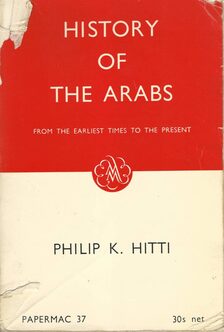
Philip Hitti
This is my dog eared copy of Hitti's famous 'History of the Arabs'. Hitti can justly claim to be Shemlan's most famous and celebrated son.
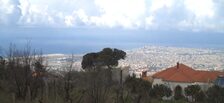
The view over Beirut from Shemlan - the Cliff House restaurant is a wonderful place to take this in on a spring evening over a beer...

Tallinn - a truly beautiful city and the core of the Hanseatic Empire. The medieval walled city area is a UNESCO World Heritage site and throughout summer Tallinn echoes to the sound of silver-haired octogenarians on Baltic cruises creaking around following shouty people waving umbrellas.
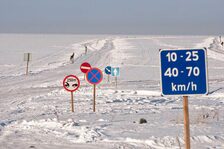
Marvellously, the ice road in Shemlan - A Deadly Tragedy is real, as are the dangers of travelling along it at the wrong speed!
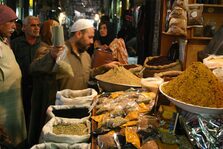
Anyone familiar with my blog should recognise this image - actually taken in the Aleppo souk back in 2006, when it was still standing.
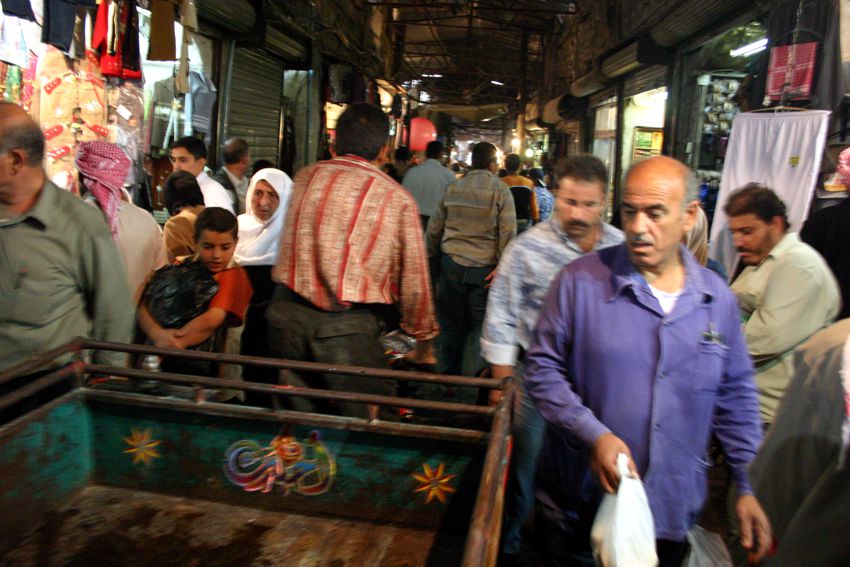
The frenetic pace in the Aleppo souk could sometimes get scary. I watched the stiff corpse of an old man being lifted out of the way at one stage. It was the longest covered souk in the world, with buildings dating back to the C14th.
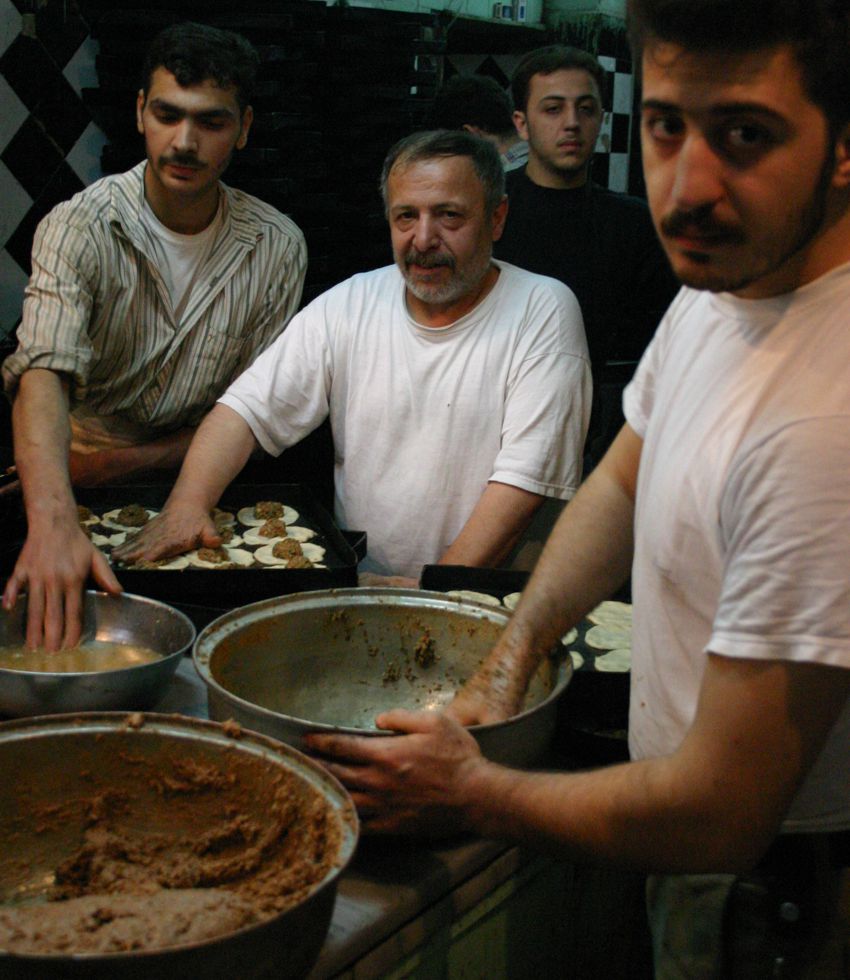
"Don't look now lads, but there's a bloody tourist with a camera pointed at us."
Every business premises in the souk had three pictures hanging up, known locally as 'The Father, The Son and the Holy Ghost' - Hafez Al Assad, wee Bashar and Nasrallah.
